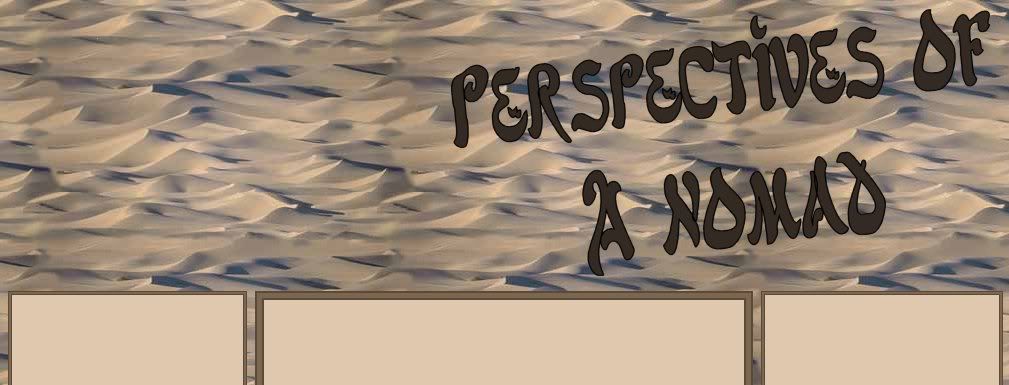Sunday, February 05, 2006
The Mohammed Cartoon Saga to Date
 As with any important story, every day breeds more details to the unfolding story of the Muslim outrage at 12 cartoon caricatures of Mohammed that were published in a Danish newspaper in early September, 2005. Since I had talked about this before, and because it is such an important story, I wanted to make sure I posted all the up-to-date facts, along with various perspectives I’ve read on the incident.
As with any important story, every day breeds more details to the unfolding story of the Muslim outrage at 12 cartoon caricatures of Mohammed that were published in a Danish newspaper in early September, 2005. Since I had talked about this before, and because it is such an important story, I wanted to make sure I posted all the up-to-date facts, along with various perspectives I’ve read on the incident.
The whole incident began in August, when a Danish children’s writer complained publicly that he could nut get his latest children’s book, on the life of Mohammad, illustrated, as cartoonists would only draw the pictures anonymously if at all as they feared for their lives. There was an outcry in the Muslim community that the author’s statements showed a clear Islamophobia, and that a contest should be held to find the best illustrator for the book.
Cartoonists were asked to submit a cartoon of Mohammad “how they saw him”. Many cartoonists were hesitant to participate, but eventually 12 artists did make submissions, and their cartoons and names were published in the Jyllands-Posten, the Danish paper, in September. Each cartoonist was paid a nominal fee (800 krone, about $130), and the artists have now pooled that money to set up a foundation which will awarn an international prize for press freedom.
In an interview with a Swedish newspaper this week, some of the cartoonists expressed their doubts about the entire episode. “It felt a little like a lose-lose situation. If I said no, I was a coward who contributes to self-censorship. If I said yes, I became an irresponsible hate monger against Islam,” one of the cartoonists said.
Another said: “I was actually angry when I first received the letter [from Jyllands-Posten]. I thought it was a really bad idea. At first I didn’t want to participate, but then I talked it over with some friends from the Middle East, and they thought I should do it.”
Initially, local Danish Muslims complained to the Danish government, noting how the Koran says that there should be no pictures drawn of the prophet Mohammad, and that drawing his likeness was heresy. Additionally, they cited one cartoon of Mohammad using a bomb for a turban an example of pure hatred towards the Muslim community, and a symbol of discrimination against Islamic people all over the world as a result of the actions of a few extremists.
The Danish government did not listen to the Muslim community, noting the freedom of the press. The government pointed to editorials that had shown poorly on other communities, including the world Jewish and Catholic communities. But the Muslim community was not swayed, and they decided to lobby other Muslim communities around the world for support. They received little at first, but that changed around 2 weeks ago, which correlates with the lobbying group’s visit to Iran, and is just before Ahmadinejad began traveling to meet with other Muslim leaders, beginning with Syria’s Bashir al-Assad.
Over the past two weeks, nearly 4 months after the publication of the cartons, momentum has steamrolled on this issue. Denmark, Germany and France have made it very clear that there can be no restriction of the freedom of the press, especially at the threat of violence. Worlfgang Schauble, German Home Minister, said: "Why should the German government apologise? This is an expression of press freedom." New Zealand just published the cartons, as Dominion Post editor Tim Pankhurst said: "We do not want to be deliberately provocative, but neither should we allow ourselves to be intimidated."
Some countries appear to be intimidated. Leaders of countries who have championed the freedom of the press, like England and the US, have come out against these cartoons. Jack Straw, British foreign secretary said: "I believe that the republication of these cartoons has been insulting, it has been insensitive, it has been disrespectful and it has been wrong". This from a country who’s newspapers have ran cartoons of everyone from the Queen Mother to the Pope, all very unflattering and politically incorrect. The United States also condemned the publication of the cartoons.
Perhaps these countries really felt that this was too big an affront to Islam. Or perhaps these countries had a justified fear of reprisals. Muslims have been in the streets for two days around the world. Estimates show hundreds of thousands protested since Friday. In Damascus, Syrians torched the Danish and Norwegian embassies, shown in the photo above. In Gaza, Palestinian youths tried to storm the office of the European Union in a pledge to give their “blood to redeem the prophet”. In London, protestors marched on the Danish embassy. And the Muslim world has begun an embargo against all Danish goods, closing a major market for the country.
The cartoonists are in hiding, in fear of their lives.
A spokesman for the cartoonists said: “They are in hiding around Denmark. Some of them are really, really scared. They don’t want to see the pictures reprinted all over the world. We couldn’t stop it. We tried, but we couldn’t.”
Mogens Blicher Bjerregaard, president of the Danish Union of Journalists, told The Times: “They are keeping a very low profile. They are very concerned about their safety. They feel a big responsibility on their shoulders. It’s blown up so big. It is tough for them.”
The editor of the Danish paper that originally published the cartoons has been fired. A Jordanian editor who published the cartoons has also been fired, and charges are being considered. Two Danish people were briefly kidnapped in Gaza. Security has been stepped up in embassies around the world, and this story is just beginning to unfold. When we look back on this incident, I suspect we will say that Friday night through Saturday night, as is often the case in the Middle East, was the calm before the storm.
Tomorrow I will do a review of the various perspectives on this story, as it seems so many people have differing opinions in this case. But one thing is becoming increasingly clear: this incident is quickly becoming a very important incident, and one that should not be overlooked. Combined with the nuclear program in Iran, you can’t help but wonder if this won’t be the incendiary device which ignites a much bigger incident.
Posted by Scottage at 2:03 AM /
| |



 As with any important story, every day breeds more details to the unfolding story of the Muslim outrage at 12 cartoon caricatures of Mohammed that were published in a Danish newspaper in early September, 2005. Since I had talked about this before, and because it is such an important story, I wanted to make sure I posted all the up-to-date facts, along with various perspectives I’ve read on the incident.
As with any important story, every day breeds more details to the unfolding story of the Muslim outrage at 12 cartoon caricatures of Mohammed that were published in a Danish newspaper in early September, 2005. Since I had talked about this before, and because it is such an important story, I wanted to make sure I posted all the up-to-date facts, along with various perspectives I’ve read on the incident.